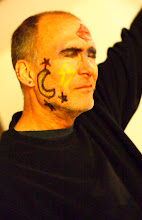
"Standing Rock" is the literal translation of Tateishi, the name of a fifteen-meter tall rock formation leaping out of the sea just a hundred meters or so north of the house site. (You can see just the edge of it on the far right of the photo at the top of the page.) It's been there long enough for Hiroshige, the famous Edo-period woodblock artist to do a print of it (no doubt with Mt. Fuji in the background). I say no doubt, because although every mention of the rock includes that fact, I haven't been able to find a copy of the print anywhere. Not even on the internet, so I'm beginning to doubt it exists.
The name of the village where the house is located is Akiya, or more poetically in English--"Autumn Valley"--which is not an image that immediately comes to mind when one thinks of beachfront. Phonetically, it can also mean deserted house, which does come to the mind of many people when we tell them we have an old place in a former fishing village or show them this picture.
The front windows face southwest. A little to the right, over the water looms Mt. Fuji, which can be disconcerting, since all our senses tell us we should be looking toward Hawaii when we're actually gazing in the direction of Shanghai. Across the bay lies the long arm of the Izu Peninsula, where I first fell in love with beach life back in 1972, while working as a day laborer on a construction team digging huge holes in the jungle floor for resort hotel hot spring tanks. (¥3000 per 10-hour day with all you could drink--and a bath. Not a hot spring bath either, but a cold hose and a barrel half.)
The name of the village where the house is located is Akiya, or more poetically in English--"Autumn Valley"--which is not an image that immediately comes to mind when one thinks of beachfront. Phonetically, it can also mean deserted house, which does come to the mind of many people when we tell them we have an old place in a former fishing village or show them this picture.
The front windows face southwest. A little to the right, over the water looms Mt. Fuji, which can be disconcerting, since all our senses tell us we should be looking toward Hawaii when we're actually gazing in the direction of Shanghai. Across the bay lies the long arm of the Izu Peninsula, where I first fell in love with beach life back in 1972, while working as a day laborer on a construction team digging huge holes in the jungle floor for resort hotel hot spring tanks. (¥3000 per 10-hour day with all you could drink--and a bath. Not a hot spring bath either, but a cold hose and a barrel half.)




1 comment:
3000 Yen per day and all you can drink, not a bad deal for back then.
I never knew you did that.
Post a Comment